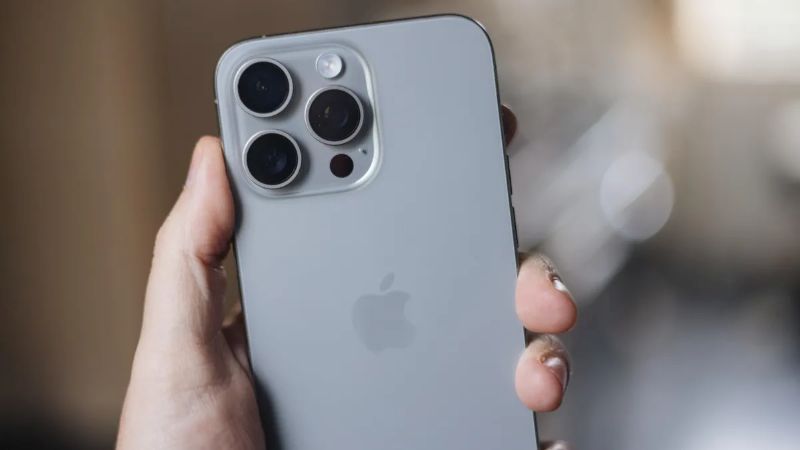

Let's explore this topic in more detail with Tiny Fishing below. The iPhone has revolutionized mobile photography, putting a powerful camera in the pockets of millions. Whether you're a casual snap-shooter or an aspiring photographer, mastering your iPhone's camera capabilities can elevate your photos from ordinary to extraordinary. In this comprehensive guide, we'll delve into expert tips and techniques to help you capture stunning images with your iPhone, unlocking its full potential and transforming your mobile photography skills.
Before diving into advanced techniques, it's crucial to understand the fundamentals of iPhone photography. The latest iPhone models boast impressive camera systems, but even older versions can produce remarkable results with the right approach. Start by familiarizing yourself with the native Camera app's features, including various shooting modes like Photo, Portrait, and Night mode.
One of the most important aspects of iPhone photography is composition. The rule of thirds is a classic principle that can dramatically improve your photos. Enable the grid feature in your camera settings to help you align your subjects along the intersecting lines. This simple technique can add balance and visual interest to your images, drawing the viewer's eye to the most important elements.
Lighting is another critical factor in photography. The iPhone's camera performs best in well-lit conditions, but it can also handle challenging lighting situations with the right techniques. When possible, shoot during the "golden hours" – shortly after sunrise or before sunset – to capture warm, soft light that flatters your subjects. In low-light situations, use the Night mode feature on newer iPhone models to capture stunning images without a flash.
Read more: Why Is Your iPhone Battery Draining Fast? Fix It Now
Once you've mastered the basics, it's time to explore some of the more advanced features and techniques that can take your iPhone photography to the next level. The Portrait mode, available on newer iPhone models, allows you to capture professional-looking photos with a blurred background, mimicking the depth-of-field effect achieved by DSLR cameras. Experiment with different lighting styles in Portrait mode to create dramatic and eye-catching images.
HDR (High Dynamic Range) is another powerful tool in your iPhone photography arsenal. This feature combines multiple exposures to create a single image with improved detail in both highlights and shadows. While the iPhone's auto HDR feature works well in most situations, learning when to manually enable or disable HDR can give you more control over your final image.
For those interested in long-exposure photography, the Live Photos feature offers a unique opportunity. By capturing a brief video clip along with each photo, Live Photos allows you to create stunning long-exposure effects without the need for a tripod or specialized equipment. Simply swipe up on a Live Photo and select the Long Exposure effect to blur moving elements like water or clouds, creating a dreamy, artistic look.
While the iPhone's automatic settings are impressive, learning to use manual controls can give you greater creative freedom and help you capture exactly the image you envision. The native Camera app offers some manual controls, but third-party apps like Halide or ProCamera provide even more extensive options for adjusting exposure, focus, and white balance.
One of the most powerful manual controls is exposure compensation. By tapping to focus and then sliding the sun icon up or down, you can adjust the overall brightness of your image. This is particularly useful in high-contrast scenes or when you want to create a specific mood in your photo.
Focus is another crucial element of photography that can be controlled manually. While the iPhone's autofocus is generally reliable, there are times when you may want to override it. Tap and hold on the screen to lock focus on a specific subject, ensuring that it remains sharp even if you recompose the shot.
Capturing a great photo is only half the battle – the editing process can often make the difference between a good image and a truly stunning one. The iPhone's built-in Photos app offers a range of editing tools that can enhance your images without the need for additional software. Start by adjusting basic parameters like brightness, contrast, and saturation to bring out the best in your photo.
For more advanced editing, explore the app's other tools such as Highlights, Shadows, and Black Point. These allow you to fine-tune the tonal range of your image, recovering detail in bright skies or dark shadows. The Selective Color tool is particularly powerful, allowing you to adjust the hue, saturation, and luminance of specific color ranges within your photo.
While the native editing tools are impressive, third-party apps can offer even more creative possibilities. Apps like Snapseed, VSCO, and Lightroom Mobile provide powerful editing features that rival desktop software. These apps allow you to apply filters, adjust curves, remove unwanted elements, and even create complex layered edits right on your iPhone.
As you become more proficient with iPhone photography and editing techniques, you'll likely start to develop your own unique style. This could involve favoring certain compositions, color palettes, or editing techniques that resonate with your artistic vision. Don't be afraid to experiment and push the boundaries of what's possible with iPhone photography – some of the most striking images come from unexpected approaches.
Consider creating a cohesive look for your photos, especially if you plan to share them on social media platforms like Instagram. This could involve using similar editing presets or sticking to a particular color scheme across your images. A consistent style can help your photos stand out and create a memorable visual identity.
Read more: Best iPhone Battery-Saving Settings for iOS 2025
While the iPhone's built-in camera is impressive on its own, various accessories can expand its capabilities and help you capture even more stunning photos. External lenses, for example, can add wide-angle, macro, or telephoto capabilities to your iPhone, allowing you to capture scenes that would be impossible with the native lens alone. Popular brands like Moment and Olloclip offer high-quality lenses that attach easily to your iPhone.
A sturdy tripod can be invaluable for certain types of photography, particularly in low light conditions or when shooting long exposures. Look for a compact, lightweight tripod that's easy to carry with you, along with an iPhone-compatible mount. Some models even double as selfie sticks for added versatility.
Lighting accessories can also make a big difference in your iPhone photography. A small LED light panel can provide additional illumination for portraits or still life shots, while a collapsible reflector can help you control and shape natural light. For more advanced setups, consider a ring light, which provides even, flattering illumination for portraits and close-up shots.
While the native Camera app is versatile, specialized photography apps can offer unique features and creative possibilities. For example, Slow Shutter Cam allows you to capture long exposure photos directly on your iPhone, perfect for light trails or smooth water effects. ProCam 8 offers advanced manual controls and RAW capture, giving you maximum flexibility in post-processing.
For those interested in astrophotography, apps like NightCap Camera are designed specifically for capturing the night sky, with features like star trails mode and noise reduction optimized for low-light conditions. Meanwhile, apps like Spectre use AI and computational photography to create stunning long exposures and light painting effects without the need for additional equipment.
Don't overlook the creative potential of more unconventional apps, either. Prisma and Enlight Photofox, for instance, allow you to transform your photos into artistic renderings, mimicking various painting styles or creating complex digital art pieces. These apps can be a great way to push your creative boundaries and develop unique, eye-catching images.
Mastering iPhone photography is a journey of continuous learning and experimentation. By understanding the fundamentals, exploring advanced techniques, and leveraging the power of editing and accessories, you can transform your iPhone into a powerful tool for creative expression. Remember that great photography is not just about technical skill, but also about developing your eye for composition, light, and storytelling.
As you continue to practice and refine your skills, don't be afraid to step out of your comfort zone and try new approaches. Share your work with others, seek feedback, and draw inspiration from the vibrant community of iPhone photographers around the world. With dedication and creativity, you'll be capturing stunning photos that rival those taken with professional cameras in no time.
Whether you're documenting your daily life, exploring the world around you, or pursuing photography as a serious hobby or profession, your iPhone is a versatile and powerful tool that's always at your fingertips.